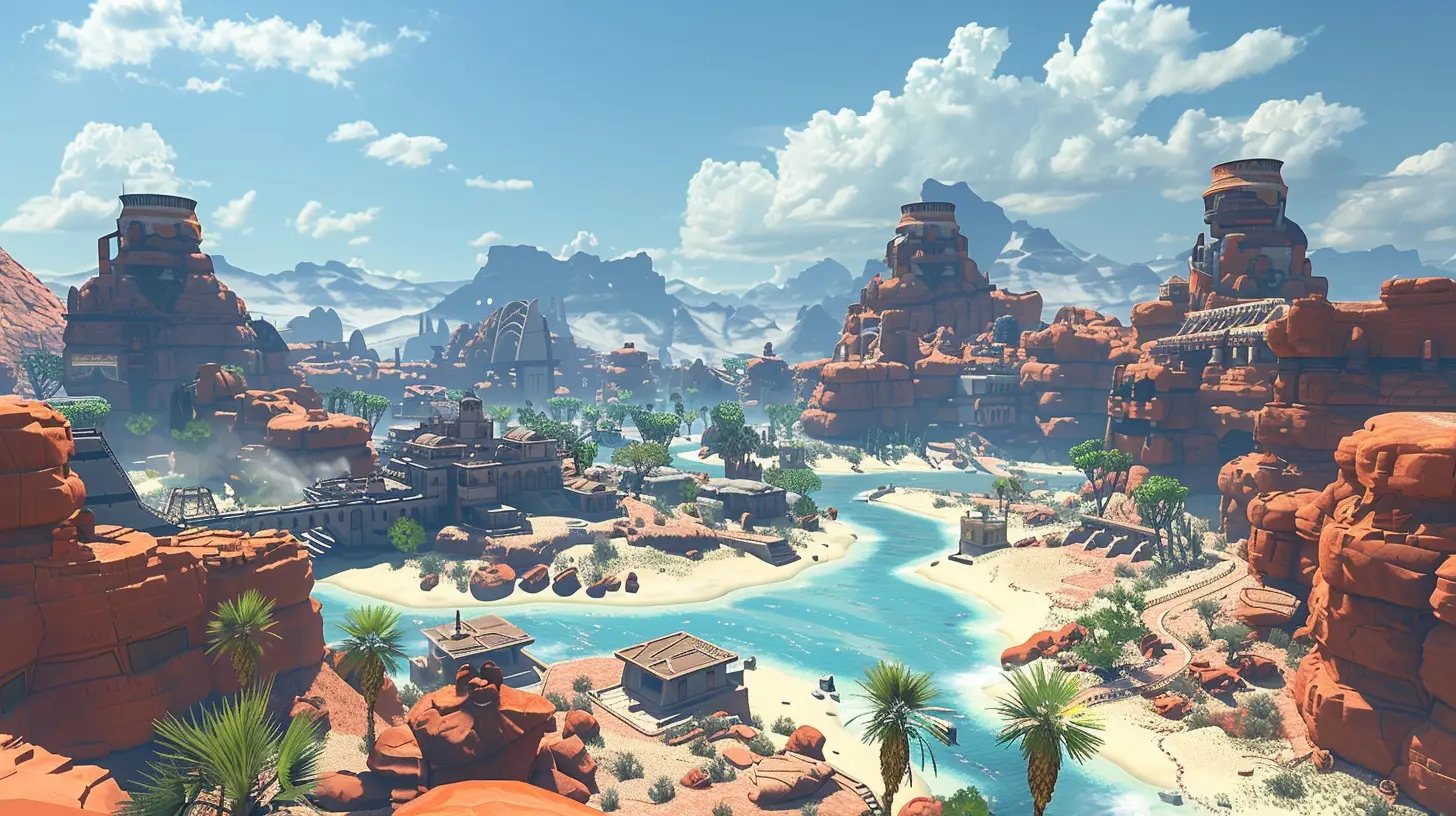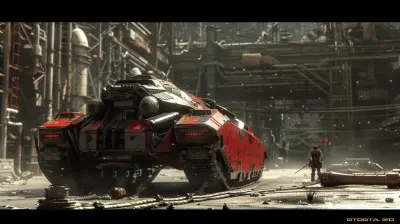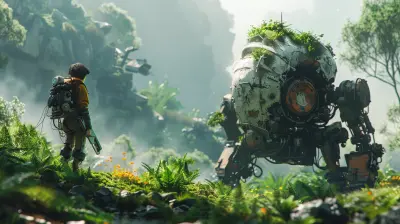25 January 2025
Have you ever been lost in the immersive world of a sandbox game and wondered, "How does everything feel so... real?" From the way trees sway in the wind to the satisfying crack of a collapsing building, physics is the unsung hero behind it all. Physics in sandbox games isn’t just a fancy feature—it’s the backbone that brings these virtual worlds to life. And let's be honest, without it, games would feel more like a stiff cardboard world with no depth or soul.
Let’s dive deep into how physics shapes the incredible, dynamic worlds we love to play in. Whether you’re a gamer, a developer, or someone casually curious about the science behind the fun, stick around. You’re in for a treat!
What Exactly Are Sandbox Games?
First, let’s get on the same page. Sandbox games are all about freedom. They’re those open-world games where you set your own goals, explore to your heart’s content, and interact with the environment in crazy, unpredictable ways. Think Minecraft, Garry's Mod, or The Legend of Zelda: Breath of the Wild. What makes these games special isn’t just their vast open spaces, but their ability to create worlds that feel alive. And the secret sauce? You guessed it: physics.Physics in sandbox games isn’t just a decoration. It's what transforms a pretty picture into an interactive playground. Without it, throwing a rock, building a tower, or launching your character off a cliff wouldn't be nearly as satisfying. Heck, it probably wouldn’t be possible at all.
Why Physics Matters in Sandbox Games
1. Realistic Interactions Bring Worlds to Life
Imagine chopping down a tree in Minecraft. The way the logs fall and stack is oddly satisfying, right? Now picture that same tree just disappearing into thin air. Boring, right? That’s the difference physics makes. It’s not just about visuals—it's about making your actions feel meaningful.Take a game like Teardown. The environment is totally destructible, and that’s only possible because of advanced physics systems. Blow up a building, and you'll see debris cascading in different directions, guided by gravity, momentum, and the mass of each object. It’s not random—it’s physics in action.
2. Freedom of Creativity and Experimentation
Sandbox games with physics systems give you the ultimate freedom to mess around. Want to stack cars on top of each other in BeamNG.drive to see how long it takes before they collapse? Go ahead. Prefer to create a giant mousetrap contraption in The Sims 4? Be my guest. Physics is what lets you experiment, take risks, and laugh at the chaos that often ensues.Have you ever noticed how much more fun it is to break things when they break "naturally"? That’s physics for you. Developers are essentially handing us a virtual science lab where we can test all those "what if" scenarios without worrying about cleaning up afterward.
3. Immersion: Feeling Like You’re Really There
In sandbox games, immersion is everything. And there’s nothing more immersive than a game that obeys the laws of the universe—or at least pretends to. When you throw a rock, it should arc and land realistically. When you jump off a cliff with a parachute, the speed of your descent should make sense.Take Breath of the Wild, for example. The physics system in that game is so detailed that even small things—like how lightning strikes metal during a storm—add to the immersion. The game follows consistent rules, which makes the world feel more believable. You’re not just playing a game; you’re living in it.
The Science Behind Sandbox Game Physics
Let’s get nerdy for a second (don’t worry, no quizzes at the end). When developers build the physics in sandbox games, they’re essentially creating simplified versions of the real world’s laws of motion, gravity, and energy. This is done using physics engines—software that calculates how objects behave in a game. Some popular engines include Unity, Unreal Engine, and Havok.Key Components of Physics in Games:
- Gravity: Makes objects fall, jump, and behave as they would in real life.- Collision Detection: Ensures objects don’t pass through each other (because that would be weird).
- Momentum and Force: Dictate how fast objects move, stop, or bounce based on how much energy they have.
- Soft and Rigid Body Dynamics: Determines how flexible or stiff an object is (like jelly versus a steel beam).
Developers don’t recreate real-world physics perfectly because, well, it would break our computers. Instead, they focus on the "fun" parts—making objects behave in ways that look and feel realistic, but aren’t too computationally intense.
Iconic Examples of Physics in Sandbox Games
Let’s spotlight some games that nailed physics in their sandbox worlds:1. Minecraft
On the surface, Minecraft doesn’t seem all that physics-heavy. But its simple yet clever application of gravity (sand and gravel fall, water flows) lays the foundation for creative builds and fascinating contraptions. Ever built a water elevator or a redstone-powered machine? Then you’ve experienced the genius of Minecraft physics.2. BeamNG.drive
This one’s a paradise for car crash enthusiasts. The game’s soft-body physics are so detailed that every impact, dent, and crumple is simulated in real time. It’s not just fun—it’s mesmerizing to watch.3. Kerbal Space Program
You can’t talk about physics-heavy games without mentioning this rocket-building simulator. It’s basically a physics masterclass wrapped in an adorable, sandbox-style space adventure. Wanna learn about orbital mechanics while accidentally blowing up spacecraft? This is the game for you.4. Garry’s Mod
Ah, the OG sandbox playground. Modders and players alike have spent countless hours building ridiculous contraptions and testing the limits of its physics engine. Balloon-powered cars? Flying bathtubs? The sky’s the limit.The Challenges of Implementing Physics in Games
As amazing as physics is, it’s not all sunshine and rainbows. Developers face some serious challenges trying to implement it in games. Here are a few:- Performance Issues: Advanced physics can demand a ton of processing power. Too many interacting objects, and your game might start lagging or crashing.
- Balancing Realism and Fun: Not everything realistic is fun in a game. Developers often tweak real-world physics to make gameplay more enjoyable. For example, in Minecraft, trees don’t fall over because it would break the game’s building mechanics.
- Buggy Behavior: Physics systems can sometimes act up, leading to hilarious glitches. Ever seen a character catapulted into space by a random object? Yeah, that’s the physics engine throwing a tantrum.
What Does the Future Hold for Physics in Sandbox Games?
Looking ahead, advancements in technology (like better GPUs and CPUs) will allow developers to push physics systems even further. Imagine games where every snowflake behaves individually, every leaf on a tree moves independently, or entire ecosystems interact based on real-world science. The possibilities are mind-blowing.Physics-based VR (virtual reality) experiences will also take immersion to the next level. Imagine reaching out to touch an object in a game and feeling it react exactly how you’d expect. The lines between virtual and real might blur in ways we’ve never imagined before.
It’s safe to say that physics isn’t just a feature—it’s the future.
Final Thoughts
Physics in sandbox games doesn’t just add a layer of realism—it’s what defines the genre itself. These games thrive on interactivity, creativity, and freedom, all of which are made possible by advanced physics systems. Whether you’re smashing cars in BeamNG.drive or launching rockets in Kerbal Space Program, you’re benefiting from years of dedicated work by developers to bring the laws of physics to life in a virtual setting.The next time you knock down a tower of blocks or send a virtual character flying, take a moment to appreciate the physics behind the chaos. It’s not just a game—it’s a digital playground brought to life by science.







Viva Bishop
This article beautifully captures the magic of sandbox games and how physics breathe life into virtual worlds. It’s fascinating to see how these elements enhance creativity and player experience. Thank you for exploring such an essential aspect of gaming design!
February 3, 2025 at 3:45 AM